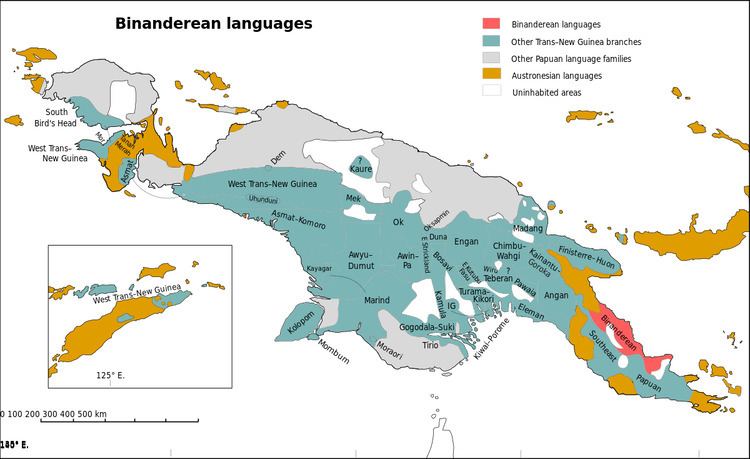Geographic
distribution: New Guinea | Glottolog: bina1276 | |
 | ||
Linguistic classification: Trans–New Guinea
Binanderean Subdivisions: Binandere proper
Guhu-Samane | ||
The Binanderean languages are a family and part of the Trans–New Guinea languages (TNG) family in the classifications of Stephen Wurm (1975) and Malcolm Ross (2005). They are found along the north/east coast of the "Bird's Tail" of New Guinea, and appear to be a recent expansion from the north. The Binandere family proper is clearly valid; Ross added the Guhu-Semane isolate based on pronominal evidence, and this has been confirmed by Smallhorn (2011). Proto-Binanderean has been reconstructed in Smallhorn (2011).
Contents
Classification
Smallhorn (2011:444) provides the following classification for Greater Binanderean. Individual languages are given in italics.
According to Smallhorn (2011), there are two linkages, namely Central Binanderean and Nuclear Binanderean. Ross (2005) reconstructs both independent pronouns and verbal person prefixes:
Only 1sg continues the TNG set.
Demographics
Smallhorn (2011:3) provides population figures for the following Binanderean languages.
